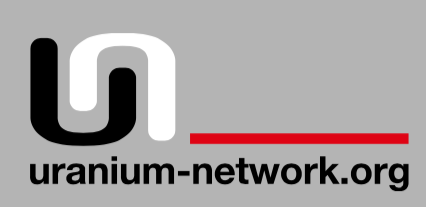By Jon A. Nones
February 21, 2008
St. LOUIS () — More bad news has befallen a uranium producer much covered by RI. On Thursday, Uranium One slashed its 2008 production forecast by 32% from a previous estimate due to slow underground development of the Dominion mine in South Africa. And CEO Neal Froneman resigned.
[Source]
The company said in a release that the development of the Dominion mine “has been adversely affected by a number of factors, including disruption in electrical power supply and equipment breakdowns.” Dominion has been delayed due to an extended autoclave commissioning period at the Dominion Reefs Uranium Mine plant in South Africa.
The Dominion Reef has probable reserves of 31.3 million pounds at a grade of 0.77 kilogram per tonne with indicated resources now at 112.4 million pounds at a grade of 0.63 kg/t. The company moved inferred resources to the indicated category, with inferred resources of uranium now 138.4 million pounds at 0.36 kg/t.
The mine produced only 171,000 pounds last year and is schedule to produced 590,000 pounds next year. It was previously estimated to produce 2 million pounds in 2008. The company had been planning to produce an average of 3.8 million pounds per year by 2011 from the mine, but further delays will push this timeline back.
In 2007, production from the company’s Kazakhstan and South African operations totalled 2.04 million pounds. The company previously estimated production at 2.1 million pounds, after cutting forecasts by 16% from 2.5 million pounds.
In late October, Uranium One its 2008 production outlook by a whopping 38% from 7.4 million pounds of uranium to 4.6 million pounds. Now for 2008, the company foresees production of just 3.15 million pounds.
Honeymoon, not mentioned in the release, was previously slated to produce 50,000 pounds in 2008. The mine, located in South Australia, is now forecast to produce zero pounds. The advanced in situ recovery (ISR) project was expected to begin in 2008 with a ramp-up to steady state production of 880,000 pounds.
For 2009, production guidance has been revised downwards by 15% to 6.8 million pounds from previously published guidance of 8 million pounds. The previous estimate of 11 million pounds in 2010 was not mentioned in the release.
On top of this, Jean Nortier, executive vice-president for business development and a former CFO, has been appointed interim CEO to replace outgoing CEO Neal Froneman, who spent 5 years practically building Uranium One from scratch.
Uranium Outlook
Uranium prices have fallen back to levels last seen at the beginning of 2007; uranium producers have lost half of their share value if not more; uranium explorers are grasping for straws. The run-up in 2007 was a thing of beauty for uranium hopefuls, but the market has since changed.
The price of spot uranium seems to be levelling off at $75, still twice as high prices in early 2006, but bullish news has been scarce. Last year’s run up was largely due to a flood at Cigar Lake, scheduled to begin producing as much as 18 million pounds starting in 2008. The mine is now expected to commence production in 2011, but the market has already factored this in.
 Although the market is still very tight, with the supply deficit cited at about 60 million pounds minus inventories to feed 141 active power plants, Uranium One’s shortfall of 2 million pounds is unlikely to spark a new rally. In fact, not even the sulphuric acid shortage in Kazakhstan, which could impact Uranium One’s South Inkai and Kharasan projects, has done much.
Although the market is still very tight, with the supply deficit cited at about 60 million pounds minus inventories to feed 141 active power plants, Uranium One’s shortfall of 2 million pounds is unlikely to spark a new rally. In fact, not even the sulphuric acid shortage in Kazakhstan, which could impact Uranium One’s South Inkai and Kharasan projects, has done much.
Back in , when uranium prices were on their way to $138/lb, Rick Rule of Global Resource Investments bravely told listeners at a in Las Vegas that the bull market was ending. Much to everyone’s chagrin, he told the conference that the “easy money has been made” and recommended selling.
Shortly after that show, the spot prices hit its high near $140 and proceeded to plummet all the way to $75 in October – a loss of 45% in just five months. Along the way, uranium producers really felt the blow.
Cameco [NYSE:CCJ; TSX:CCO], the world’s largest uranium producer, went from $56 to today’s $36.37; Denison Mines [AMEX:DNN; TSX:DML] went from $15 to $7.50; Uranium One [TSX:UUU] went from C$18.65 to C$5.33.
The news today alone sent Uranium One shares down 17% on 9.5 million traded. Investors would be wise to trade cautiously in this environment.
